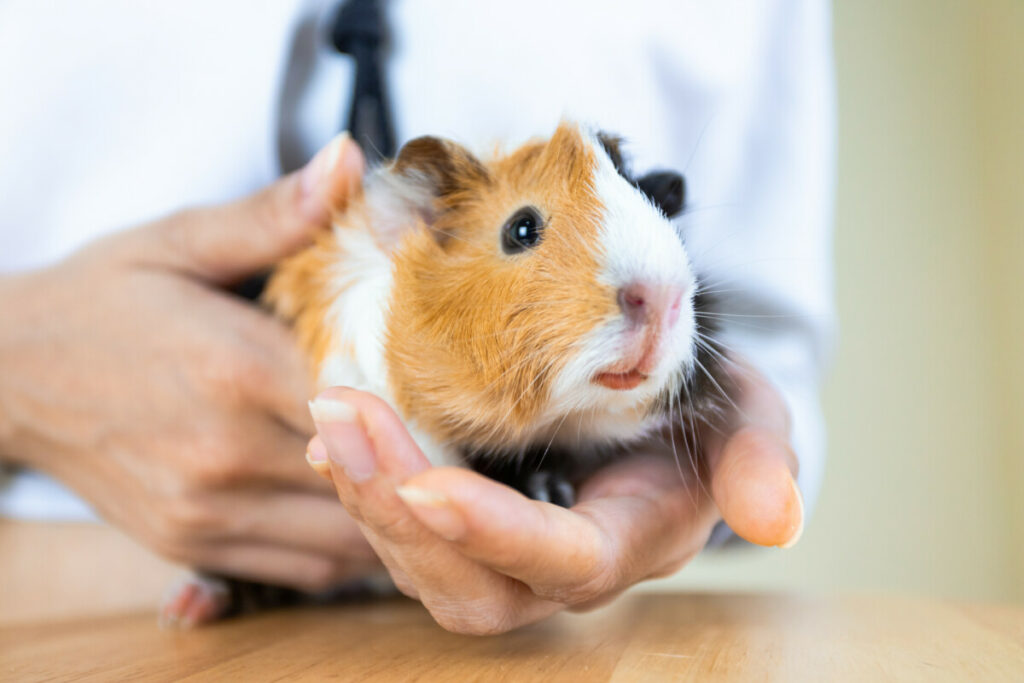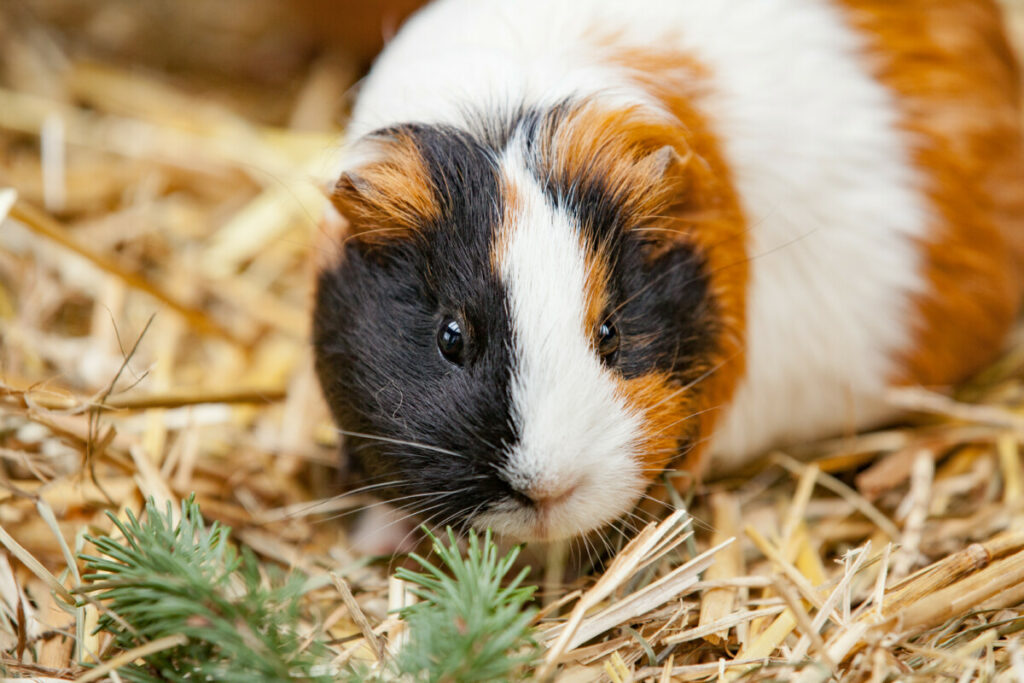Despite the name, guinea pigs are not real pigs, but rodents. Originating from South America, these rodents can be everyone’s favorite home pets. Though coming from a warmer climate, can guinea pigs hibernate during the winter?
Guinea pigs don’t hibernate. However, they aren’t exposed to low temperatures often and will require special care during colder seasons. Guinea pigs can develop hypothermia when exposed to low temperatures. Ensure warm temperatures are maintained and treat hypothermia symptoms appropriately.
Read on to learn about why guinea pigs don’t hibernate, and how to help keep guinea pigs safe from extreme temperatures. There are lots of ways to keep them safe, happy, and healthy, but the first step is to be well informed.
Why Guinea Pigs Don’t Hibernate
Because guinea pigs are originally from South America, they are naturally more inclined to warmer temperatures. This is likely a large part of the reason that they are so unaccustomed or prepared for any kind of colder climates. Animals that hibernate generally hail from countries, areas, and climates where the dropping temperatures in certain color seasons require them to do so. Being from a warm area means that guinea pigs would have had to evolve in order to begin hibernating as a defensive effort against freezing. However, the guinea pigs that are in other countries are almost completely domestic and do not require this drastic of a change in their natural behaviors.
Even during the early stages of fall, guinea pigs can begin to struggle with temperatures dropping below 60 degrees Fahrenheit. Guinea pig owners need to be sure that they are monitoring the temperature where their pets are staying, because being too cold, or even too hot, can put the animals at serious risk.

The Optimal Temperature for Healthy and Happy Guinea Pigs
The optimal temperature to keep the room that your guinea pig’s cage is in is between 65-80 degrees Fahrenheit. If you are planning on changing the temperature of the room too far above or below this range, it is likely best for you to relocate your guinea pigs to a place where they can remain in this safe temperature range.
Guinea pigs should never be in temperatures below 50 degrees Fahrenheit, which is equivalent to 10 degrees Celcius. This is the lowest temperature that it is even possible for a guinea pig to survive in. This being said, the air must be dry for guinea pigs to even survive at 50 degrees, because any humidity or moisture in the air will cause them to be wetter and decrease their body’s ability to remain warm. In humid climates, the lowest possible temperature will be higher than 50 degrees Fahrenheit to account for this additional factor.
In the case that there are not any ideal areas warm enough for your guinea pig to reside safely, the use of a small space heater or even a simple hair dryer can be used to help keep the guinea pig warm. However, this should be done carefully, because it is also dangerous for guinea pigs to be in too warm of temperatures even though they naturally have a higher tolerance for warmth than cold.
For guinea pigs to be healthy, their body temperature must maintain a minimum of at least 95 degrees Fahrenheit. The average guinea pig’s body temperature is between 102-104 degrees Fahrenheit, but being in an overly moist or cold environment can quickly change this for the worse. This is why it is dangerous for guinea pigs to be too cold.

Symptoms of Hypothermia and How to Treat it
If guinea pigs are exposed to freezing, or slightly cold, temperatures (anything below 50 degrees Fahrenheit), this can lead to one, or many, different situations and conditions that can be incredibly dangerous for them.
Hypothermia is when the body cannot produce heat for itself. The body heat loses faster than it can produce and hypothermia is fatal to guinea pigs if caught.
The primary symptoms of hypothermia in guinea pigs are:
- Cold ears: A great physical indication that guinea pigs may have hypothermia is the feel of their ears. Touching the ear should feel cold. If so, the chances that your guinea pig is cold also is high.
- Shivering: Next, shivering is the result of muscles being contracted to generate heat.
- Curling up: When they are cold, guinea pigs curl up to retain body heat. They will also curl up next to other guinea pigs to stay warm, as they are social creatures and the heat coming from the other guinea pigs will help them stay warm.
- Lack of movement/appetite: A lack of movement and appetite are common symptoms of hypothermia in guinea pigs. If the animal is sick, it will choose not to move much to minimize the effects and will no longer eat regularly.
Signs of hypothermia or freezing shown by a guinea pig should be taken very seriously. These are very small creatures, and they do not have the body mass to keep their temperature well-regulated when in colder environments.
Here are some things that you can do to prevent your guinea pig from getting hypothermia:
- Relocate habitat: Relocating the cage means permanently or temporarily removing the cage from a cold environment. If guinea pig cages are usually outside, bring them indoors during the colder seasons. The removal from a cold environment is the goal.
- Additional bedding: Whether or not relocation is possible, another method is to provide additional bedding. Fresh, clean pillows and blankets will help guarantee warmth for guinea pigs.
- Reduce drafts: Minimize any drafts flowing in and out of the room. Make sure all doors and windows are sealed. Doing so not only reduces drafts but also maintains room temperature.
- Insulate cage: Purchase or create an insulated hutch. The ideal hutch retains heat and provides a warm environment for guinea pigs.
Overall, hypothermia is a major contributor to a guinea pig’s mortality. Keeping in mind the South American origins of guinea pigs will provide a foundation for how to treat these animals.
Recent Posts
It is no secret that furry little chinchillas are widely considered to be among the cutest of animals alive. Their soft and thick fur coats make them look more like a fuzzy pillow than an animal! One...
Just like pretty much all rodents, chinchillas need to chew on things to keep their teeth at a healthy length. They love to chew on wood, but not all kinds of wood are good for them. So, which types...

